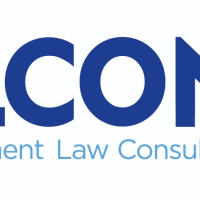28.05.2019
Stand and Deliver!
Last week I posted the first of a promised three blogs under the theme “Before, During and After” covering key points to consider when designing, delivering and evaluating an event like a training course. The key points are all transferable to other workplace and service activities -with suitable adjustments or tweaking at the edges.
Last week I profiled 14 “BEFORE” points. Today I look at 15 “DURING” points and next week “AFTER”
Generally, DURING any training course, I try to ensure that: -
1. The organiser is there to meet and greet me. That can be a hostage to fortune!
2. I arrive 45 minutes on the day to check that the “before” points agreed in the venue arrangements are all in place and working. Nothing worse than either not being able to get in or finding you have to lug furniture about. It happens!
3.Paperwork such as registers and handouts (if needed) are suitably collated and ready to go.
4. Participants have been told something like 0915 early morning drink with 0930 start. People still arrive by instalments however, so I find that by 0930 you start the event on the principle of “greatest good for the greatest number”. Late arrivals get a catch up at first break. Even those who have arrived late for a time management course! Yes, it happens lol.
5.Every participant receives an informal “meet and greet” from me with the promise that formal introductions and announcements will be made at the start. Any paperwork they have to complete is usually sorted here.
6.I stand and deliver. I never sit down.
7.In opening after a short snappy introduction laced with humour and setting out the domestic information, I check that everyone can stay for the duration. There will be some who have to go early, come and go and even some arrive you were not expecting!
8.In the “before” stage, I will already with the client established if anyone has any specific needs to access the learning materials and content. Any last-minute remedial points for adjustment here can usually be facilitated with discretion.
9.There is space for everyone to say something about themselves, why they are on the course and any personal things like a “claim to fame” or a hobby. I have a range of ice breakers and can usually tailor one for a specific audience if the “before” work was undertaken efficiently.
10.There is then space to showcase the specific course content and the planned activies usually in the light of 9 with the words “Thank god what you want is what I’ve got -and quite a bit more!”
11.We all put together a learning agreement or set of ground rules. Usual topics that arise here include “All Questions Valid, Confidentiality (Chatham House rule), Honesty, One Voice, Punctuality, Respect and….
12.Use the Parking Bay! My name for a device like a flipchart hanging on the wall to capture issues that arise which whilst not directly related to the course might prove useful in developing knowledge after the course. The device can also be useful in collecting feedback or questions for the HR department or other policy stakeholders to address after the course. And it stops the timetable from being hijacked!
13,Keeping an eye on the clock. It is amazing how many training venues don’t have a simple wall clock so in my Mary Poppins bag of tricks( blue tac, pens,pencils,post its etc) I carry the old bedside clock of my late Uncle Harry which suitably displayed keeps me and the people to time.
14.Provide a running commentary with summary of modules covered and those to come.
15.In closing, I check that the expectations set out by each individual in 9 have been covered, that final questions are addressed, evaluation sheets given out and the next steps are signposted for post course action
And it is these “AFTER” points I will discuss next week.
The only immediate “AFTER” point is that sometimes a participant or participants will want to talk to you privately about a workplace issue especially on an employment law course. In the ground rules set out in 11 above I always stress that I cannot be drawn into workplace disputes but have agreed a protocol with the client that any person with an issue will be signposted to HR.
And of course, if people simply want sources of further information signposted and/or clarity on a given point in the training to be provided, this is usually easy to facilitate. The key point is having this cushion time built into your timetable.
Last week I profiled 14 “BEFORE” points. Today I look at 15 “DURING” points and next week “AFTER”
Generally, DURING any training course, I try to ensure that: -
1. The organiser is there to meet and greet me. That can be a hostage to fortune!
2. I arrive 45 minutes on the day to check that the “before” points agreed in the venue arrangements are all in place and working. Nothing worse than either not being able to get in or finding you have to lug furniture about. It happens!
3.Paperwork such as registers and handouts (if needed) are suitably collated and ready to go.
4. Participants have been told something like 0915 early morning drink with 0930 start. People still arrive by instalments however, so I find that by 0930 you start the event on the principle of “greatest good for the greatest number”. Late arrivals get a catch up at first break. Even those who have arrived late for a time management course! Yes, it happens lol.
5.Every participant receives an informal “meet and greet” from me with the promise that formal introductions and announcements will be made at the start. Any paperwork they have to complete is usually sorted here.
6.I stand and deliver. I never sit down.
7.In opening after a short snappy introduction laced with humour and setting out the domestic information, I check that everyone can stay for the duration. There will be some who have to go early, come and go and even some arrive you were not expecting!
8.In the “before” stage, I will already with the client established if anyone has any specific needs to access the learning materials and content. Any last-minute remedial points for adjustment here can usually be facilitated with discretion.
9.There is space for everyone to say something about themselves, why they are on the course and any personal things like a “claim to fame” or a hobby. I have a range of ice breakers and can usually tailor one for a specific audience if the “before” work was undertaken efficiently.
10.There is then space to showcase the specific course content and the planned activies usually in the light of 9 with the words “Thank god what you want is what I’ve got -and quite a bit more!”
11.We all put together a learning agreement or set of ground rules. Usual topics that arise here include “All Questions Valid, Confidentiality (Chatham House rule), Honesty, One Voice, Punctuality, Respect and….
12.Use the Parking Bay! My name for a device like a flipchart hanging on the wall to capture issues that arise which whilst not directly related to the course might prove useful in developing knowledge after the course. The device can also be useful in collecting feedback or questions for the HR department or other policy stakeholders to address after the course. And it stops the timetable from being hijacked!
13,Keeping an eye on the clock. It is amazing how many training venues don’t have a simple wall clock so in my Mary Poppins bag of tricks( blue tac, pens,pencils,post its etc) I carry the old bedside clock of my late Uncle Harry which suitably displayed keeps me and the people to time.
14.Provide a running commentary with summary of modules covered and those to come.
15.In closing, I check that the expectations set out by each individual in 9 have been covered, that final questions are addressed, evaluation sheets given out and the next steps are signposted for post course action
And it is these “AFTER” points I will discuss next week.
The only immediate “AFTER” point is that sometimes a participant or participants will want to talk to you privately about a workplace issue especially on an employment law course. In the ground rules set out in 11 above I always stress that I cannot be drawn into workplace disputes but have agreed a protocol with the client that any person with an issue will be signposted to HR.
And of course, if people simply want sources of further information signposted and/or clarity on a given point in the training to be provided, this is usually easy to facilitate. The key point is having this cushion time built into your timetable.
An experienced, energetic and creative freelance trainer with growing portfolio of technical, managerial and soft skills courses. Major specialism in employment and equality laws allied to other…
Property
Why Do We Need Emergency Lighting?
Emergency lighting plays a critical role in ensuring life safety first in any…
Employment & HR
Labour’s new Employment Rights Bill: challenges employers...
The introduction of Labour’s Employment Rights Bill on 10th October 2024 has created a significant shift in how…
More Articles
Business Management
The Value of a Sustainability Strategy in the Tender Process
In today’s competitive landscape, businesses face increasing pressure to demonstrate their commitment to…
Business Management
Unlocking the Power of Raw Financial Data
At Master of Coin Consulting, we offer independent strategic finance advice to help micro to medium-sized businesses…
Would you like to promote an article ?
Post articles and opinions on Professionals UK
to attract new clients and referrals. Feature in newsletters.
Join for free today and upload your articles for new contacts to read and enquire further.







